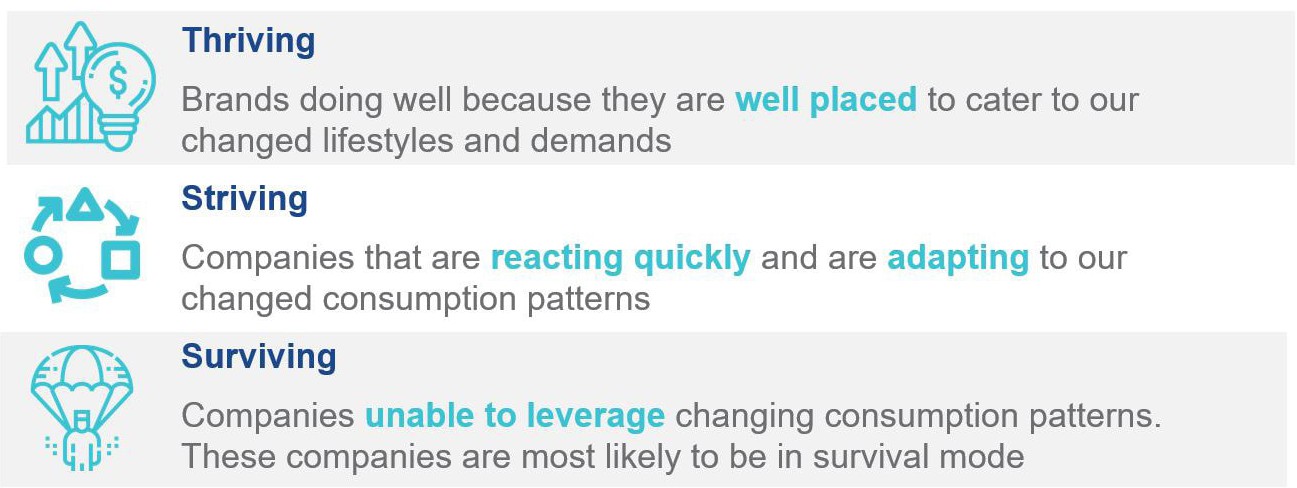The economic and socio-political crisis that has evolved from COVID-19 is affecting a broad spectrum of brands, but not all are impacted in the same way…
As the pandemic has triggered market crashes across the globe, we have estimated the brand value at risk for the world’s most valuable brands.
We assessed the impact of COVID-19 based on the effect of the outbreak on enterprise value, compared to what it was on 1st January 2020. In Q1, the estimated brand value at risk was US$1 trillion given the strict lockdowns that have affected economic activity across the board. But since then, many sectors have bounced back, painting a more complex picture.
The risks are not uniform for all sectors and all brands. Usually, there are two types of risks that affect brands during a crisis:
- Sectorial: the range of impact depends on the type of product, service, or category where the brand operates
- Own: the impact also depends on the company’s own culture, appetite for risk, orientation to innovation, and flexibility.
Sectorial Risk
Brand Finance estimates the likely impact on brand value for each sector based on the impact of the pandemic on enterprise value observed in the period between January 2020 and September 2020. The sectors can be classified into five categories:
- High positive impact
- Moderate positive impact
- Limited impact
- Moderate negative impact
- High negative impact

Own Risk
Within categories and sectors, not all brands are impacted in the same way. This depends on their 'Own Risk'. The real differentiator is in how brands have responded to this crisis.
We have noted three distinct ways that impacted brands have responded:

Thriving
Some companies are now thriving and are well placed to cater to our changing lifestyles, but how they act now can shape future trajectory. Zoom, Vodafone, and Amazon are good examples of brands that fit into this category.
But all of them are facing their own challenges. Zoom due to privacy concerns, Vodafone for raising prices in the UK in the middle of lockdown, and Amazon are faced with trade union problems in the US, Spain, and Italy.
These reputational issues must be tackled for Amazon to emerge out of the crisis as a stronger brand and fully optimise its long-term profitability. The surge will not last forever, and these examples illustrate that managing brand reputation through scrutiny is key to maximize long-term profitability.
Striving
A second group of brands is striving, adapting and reacting rapidly, either by adapting business plans, products, and services to maximize changing opportunities and stay current, or adapting the production to cater for urgent social needs.
For example, Cabify has launched a courier service on top of its traditional people transportation services. Similarly, LVMH decided in mid-March, that it would dedicate three of its perfume manufacturing premises to produce hand sanitizer. 1
Surviving
A third group of companies is merely surviving, as they are unable to transition online or have come to a standstill. Hotel and airline brands could lose up to 20% of their brand values and are good examples of companies in this third cluster
How To Mitigate The Impact Of The Pandemic
There is no universal recipe, but some ingredients must always be present in our "crisis mix":
- Keep investing in communications but avoid meaningless messages. Find the right content and tone. It is not about how much you invest, but how you invest.
- Consider how your brand actions will improve the lives of stakeholders. Build brand reputation, not campaigns.
- Adjust all the elements of your “marketing mix” and not just your promotion. Ask yourself what you can do to improve the lives of your customers.
- Consider whether taking short-term losses can generate long-term profitability. In particular, when it comes to protecting employees.
- Consider how you can collaborate with other stakeholders and share your resources to alleviate the impact of the pandemic in your community. Today, brands are expected to provide collaboration, protection, and security.
To manage the aforementioned risks, metrics linked to the creation of brand value must be measured and monitored. But measuring requires a clear vision. So, the question every smart, committed brand leader should be asking now is: where do we want to be in 2021?
Managing Your Brand in a Crisis 101
How Has COVID-19 Impacted Brand Value and What Can You Do About It?
5 Ways to Manage Your Brand In Times Of Crisis
Managing Your Brand in Times of Crisis: Lessons From the Past
How Brands Can Overcome Unprecedented Crises
